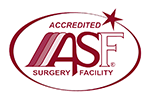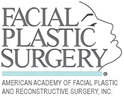Beverly Hills Deep Plane Facelift
Dr. Ben Talei, a dual board-certified facial plastic surgeon, performs the most advanced and comprehensive deep plane facelift, providing natural and elegant results. For patients and physicians who are familiar with the variety of techniques used worldwide, they understand that this technique cannot be surpassed. Using an advanced deep plane release, Dr. Talei is able to more comprehensively and naturally rejuvenate the face. Although it may not be fully intuitive, when using the appropriate techniques, even the most significant and substantial changes in the face can appear very natural and unoperated on. This is the secret behind the deep plane facelift.
THE ART OF DEEP PLANE FACELIFT
Dr. Talei’s mastery lies in the comprehensive and natural rejuvenation achieved through the advanced deep plane facelift. Unlike traditional lifts, this technique involves releasing all tethering points in the face and performing a deep plane release between muscle layers. The absence of opposing tension forces results in longer-lasting outcomes without scarring or irregularities.
Addressing Gravity’s Effects
Through a deep plane release, Dr. Talei counteracts the effects of gravity, repositioning underlying tissues and achieving substantial changes in the face. This technique, focused on release and repositioning rather than suture pull, provides a more durable result, enhancing the face’s attractiveness and maintaining a slender and elegant appearance.
Volume Loss and Hollowing
Contrary to the belief that volume loss is the main cause of facial hollowing with aging, deep plane facelift before-and-after photos reveal a different reality. While fat grafting addresses volume loss non-surgically, a true deep plane facelift surpasses it in results. This lift rejuvenates the face and neck comprehensively, delivering attractive, slender and natural outcomes.
COMMON SIGNS OF AGING ADDRESSED
A deep plane facelift is designed to address various signs of aging, particularly those that involve the midface and lower face. Common signs of aging that a deep plane facelift can effectively address include:
- Sagging and drooping cheeks
- Nasolabial folds
- Jowls
- Loss of facial volume
- Midface sagging
- Excess skin and wrinkles
- Neck bands and jawline definition
- Overall facial rejuvenation
E! News – Awake and Painless Deep Plane Facelift
TYPES OF FACELIFTS: DEEP PLANE VS. SMAS-LIFTING
SMAS-LIFTING TECHNIQUES
The most commonly performed facelift nationwide is the SMAS (superficial musculo-aponeurotic system) lifting method. Recognized by various names such as “mini-lift” or “weekend lift,” these procedures primarily concentrate on elevating the skin and utilizing pulling mechanisms. Although effective for individuals seeking minimal downtime and specific targeting of the neck and jawline, their durability presents variability, typically lasting around three years.
Characteristics of SMAS-Lifting Techniques
SMAS-lifting techniques have evolved from traditional facelift approaches that merely involve skin elevation. These modern variations involve a significant skin dissection, coupled with the utilization of sutures to manipulate the SMAS-platysma complex. The platysma, a muscle traversing the neck and lower face, transitions to the SMAS on the upper cheek. By pulling on this layer, increased movement is achieved, minimizing irregularities since tension is not solely imposed on the skin.
However, the durability of SMAS-lifting procedures varies among surgeons, with most studies indicating that patients typically seek a second procedure around eight to ten years after the initial facelift. Despite their widespread use, the results obtained with these lifts generally last around three years. Advanced techniques employed by some surgeons may extend the longevity and enhance the outcomes of SMAS-lifting procedures.
DEEP PLANE FACELIFT
In stark contrast to SMAS-lifting, the deep plane facelift stands out for delivering more natural and enduring results. Dr. Ben Talei’s expertise in this advanced technique revolves around the meticulous release and movement of muscle and fat layers, restoring them to a position reminiscent of youth. This comprehensive approach distinguishes itself by achieving tension-free movement, effectively rejuvenating the midface without resorting to additional procedures like fat grafting or implants.
What is involved in a Deep Plane Facelift procedure?
The deep plane facelift involves hidden minimal access incisions made around the ear, enabling a meticulous elevation of the skin before delving beneath the SMAS-platysma complex. This “deep plane” refers to the anatomical plane between the SMAS-platysma complex (muscle and fascia) and the deeper layer of muscles responsible for facial expression. A thorough release of tethering ligaments from lateral to medial allows for superior repositioning of the cheeks and fat pads. This unique feature provides a more youthful and heart-shaped appearance to the aging face.
Furthermore, the deep plane facelift can be distinguished by its capability to address concerns without relying on supplementary procedures. Unlike SMAS-lifting techniques, deep plane facelift results in significant rejuvenation and refinement of the neck and jawline, often eliminating bunching and loss of definition around the ear and jaw angle. Dr. Talei’s deep plane facelift is an artful and intricate procedure, requiring advanced skill and training for its safe and effective execution.
Deep plane facelift Faq
How long do results last with a deep plane facelift?
Deep plane facelift results are typically more enduring than traditional lifts, often lasting longer than eight to ten years, with some achieving substantially longer-lasting and impressive outcomes.
Can a deep plane facelift be combined with other procedures?
Yes, a deep plane facelift can be combined with midline platysmal tightening procedures, providing comprehensive facial enhancement.
Is there a risk of scarring with a deep plane facelift?
The risk of scarring is minimal with a deep plane facelift, especially when performed by an expert surgeon. Hidden minimal access incisions contribute to discreet and natural-looking results.
How does a deep plane facelift differ from SMAS-lifting?
Deep plane facelift focuses on releasing and moving muscle and fat layers, achieving tension-free movement and natural rejuvenation. In contrast, SMAS-lifting primarily involves skin elevation and pulling.
CHOOSING THE RIGHT SURGEON
The efficacy of facelift procedures depends on the surgeon’s skill and technique. Dr. Talei, with dual fellowship training in facial plastic and reconstructive surgery, excels in the most advanced techniques. As a revision facelift specialist, his most impressive and utilized technique is the SMART lift, which is an advanced, extended deep plane face and neck lift. Ultimately, no matter what the lift is called or how the procedure is described, the only thing you can reliably evaluate to help select the most suitable surgeon for yourself is the results they achieve. Please visit our FACELIFT information page for more information on evaluating a surgeon’s results and photos. You can also view Patient Testimonials and Results on our review page.

















